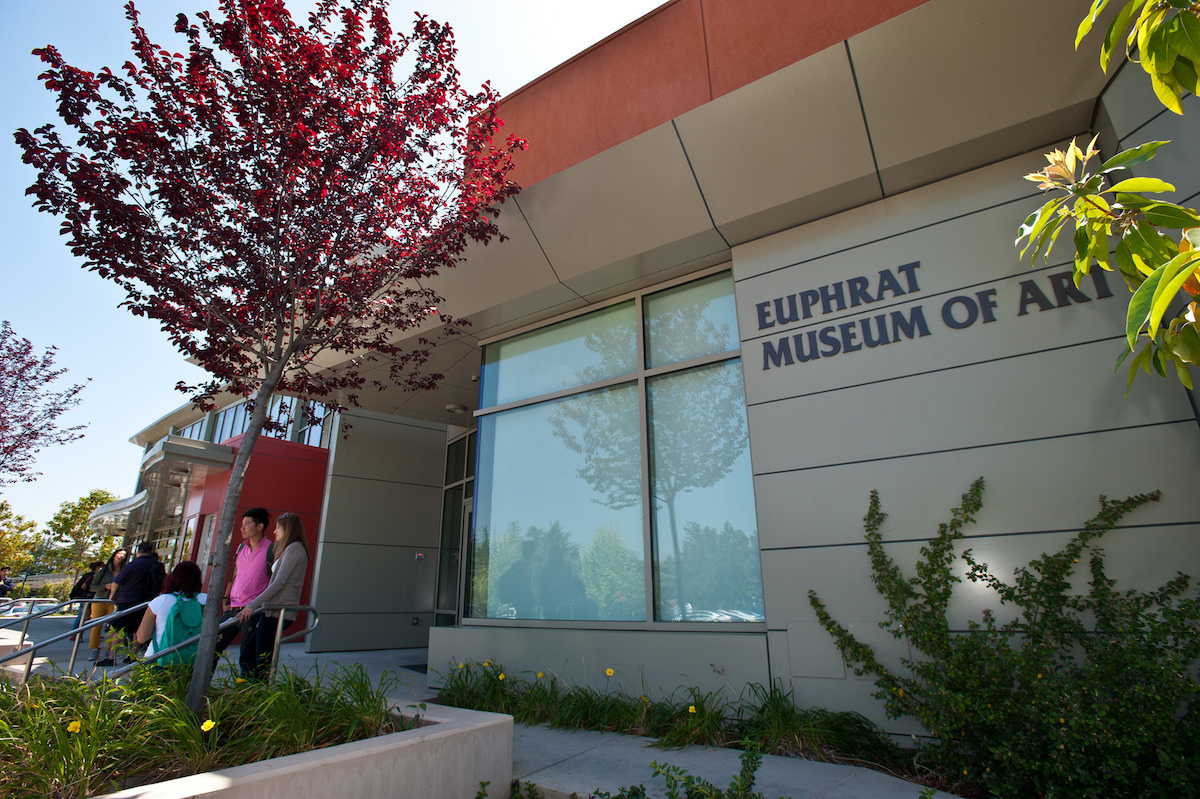Works by Agnes Pelton
The Euphrat Museum of Art is proud to serve as home for a collection of works by the pioneering modernist painter Agnes Pelton (1881-1961). While these works are not currently on display, the Euphrat loans them for exhibition by other nonprofit educational institutions.
The collection began with donations from Cornelia and Irving Sussman, who were Pelton's neighbors, friends and champions of her work. Their gift was inspired by "Staying Visible," a 1981 Euphrat exhibition and ongoing project to highlight the importance of archival material associated with underrecognized artists and their work. In the years since, Pelton has gained significant recognition.
"Pelton translated favorite subjects – a glowing star, an opening flower – into life-affirming images of rare beauty and resonance," art historian Michael Zakian wrote in an essay for American Art Review. "In many ways, her paintings resemble the art of her contemporary Georgia O'Keeffe, only more colorful, more spiritual, and more imaginative."
The works below have been exhibited at the Euphrat and loaned for display around the country. Key earlier exhibitions were at Ohlone College, the Palm Springs Desert Museum and the Orange County Museum of Art. "Light Center" was loaned to the Phoenix Art Museum for a 2019-2021 traveling exhibit and book, "Agnes Pelton, Desert Transcendentalist," which was featured at venues including the Palm Springs Desert Museum, the New Mexico Museum of Art and the Whitney Museum in New York City.
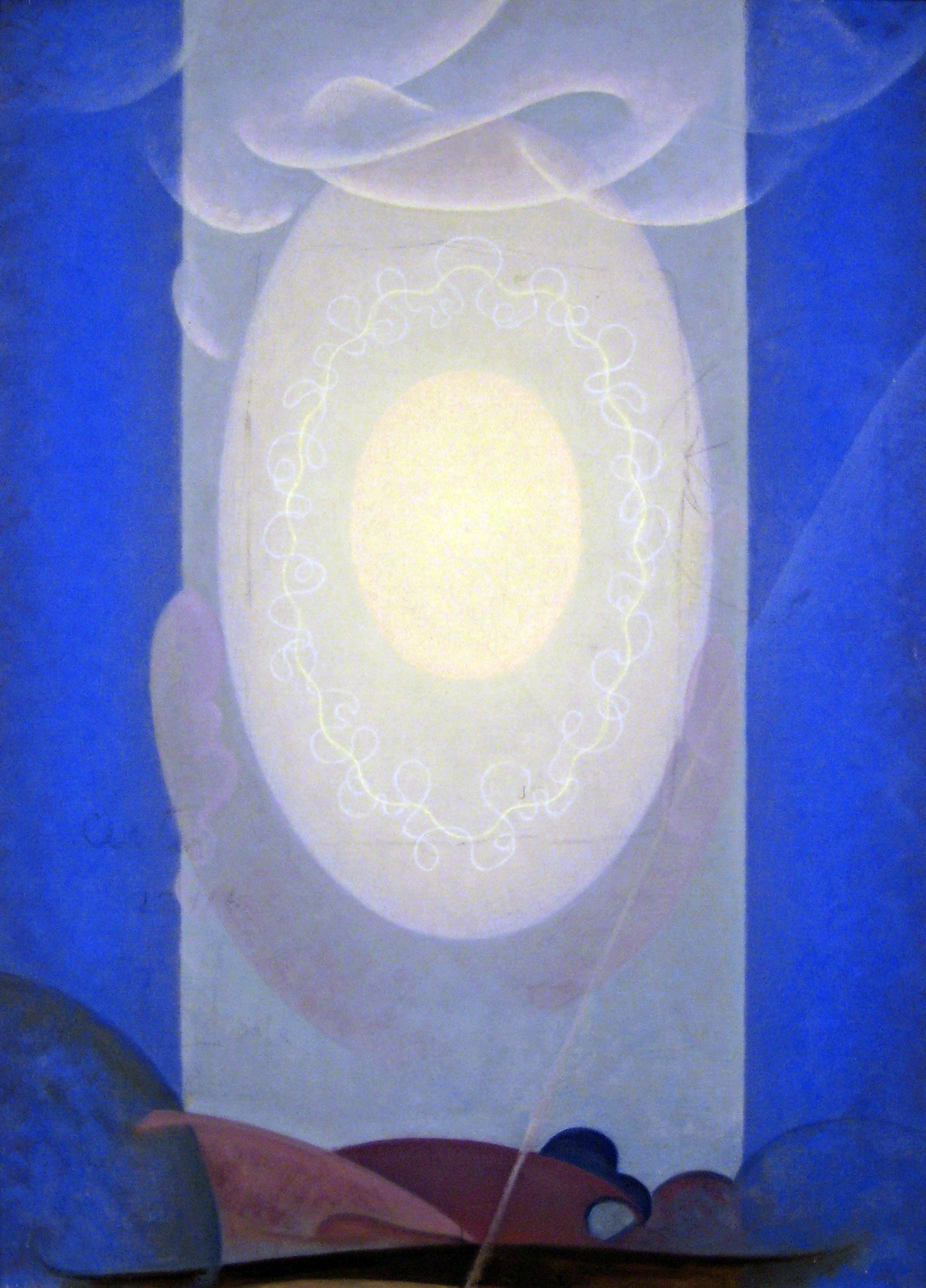
Light Center, 1961
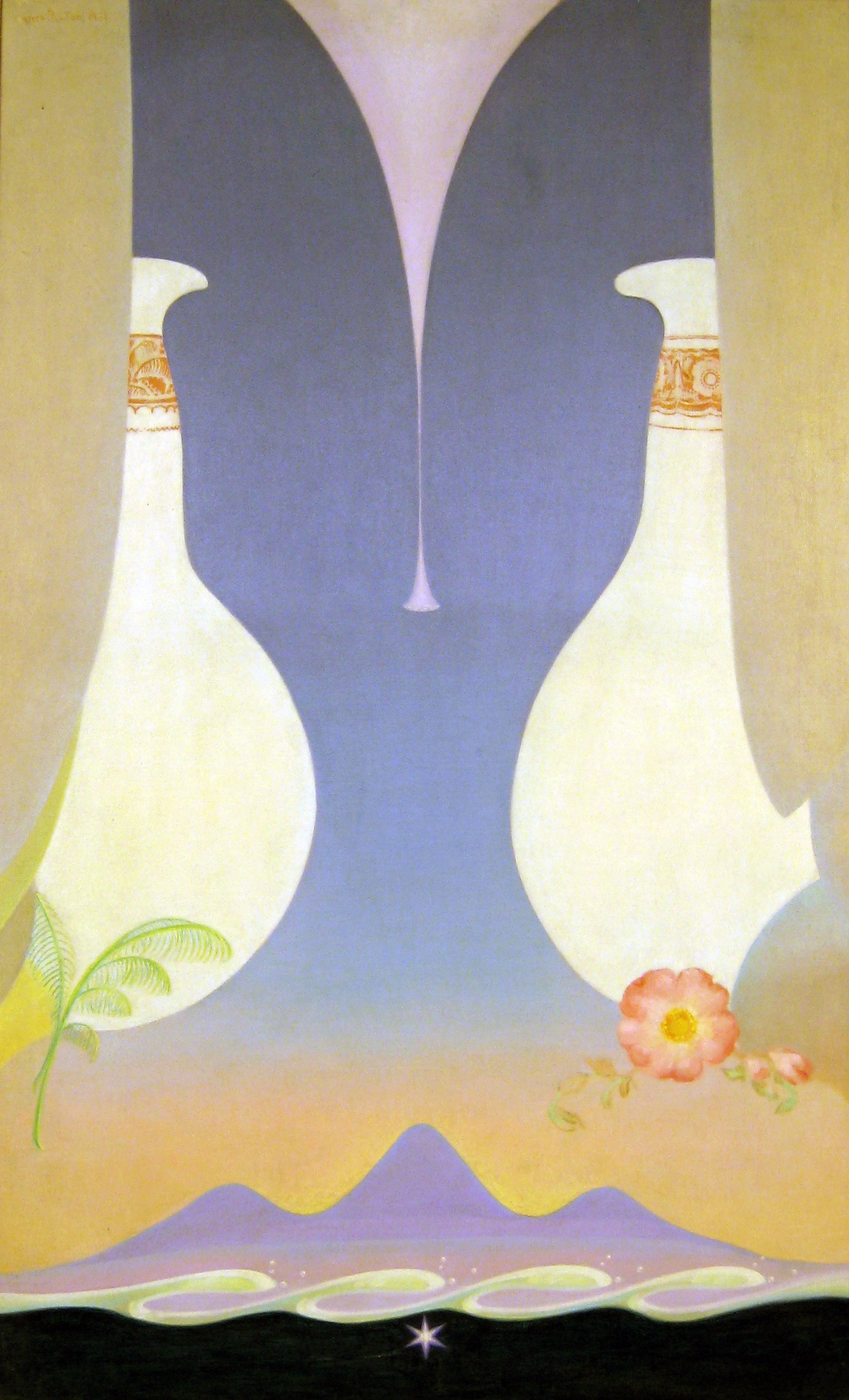
Rose & Palm, 1931
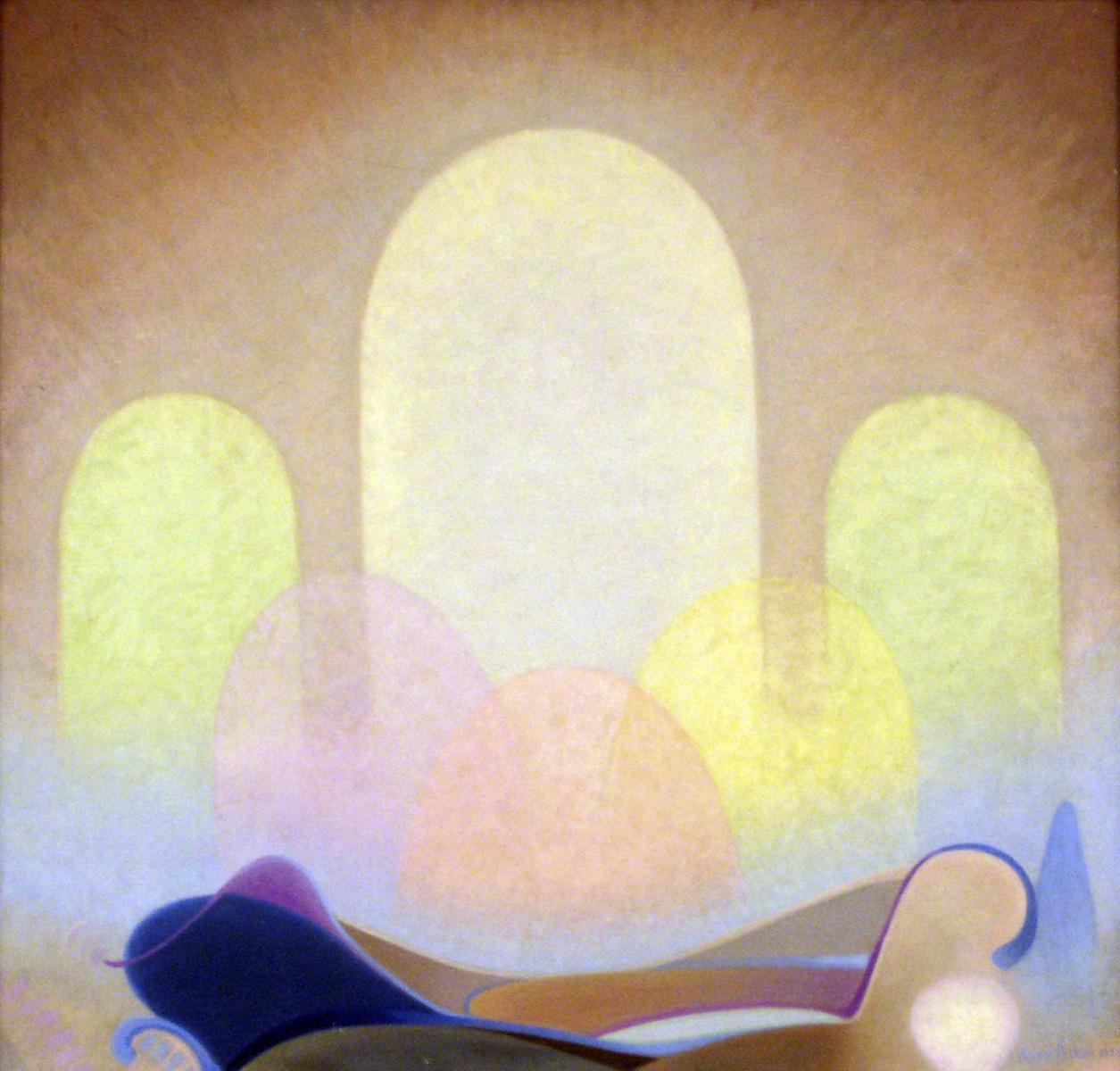
Caves of the Mind, 1929
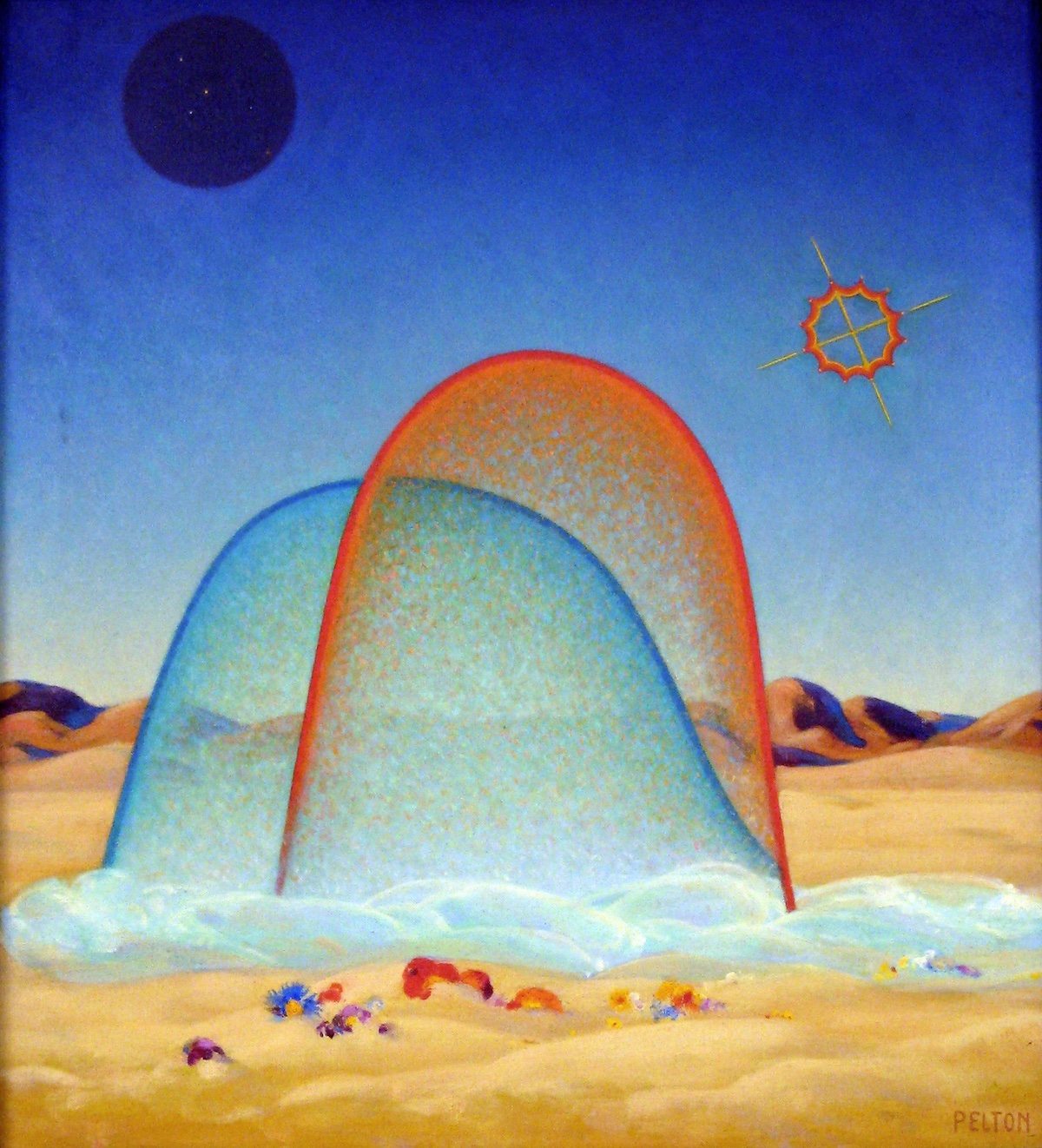
You Both Make the Desert Flower, 1953
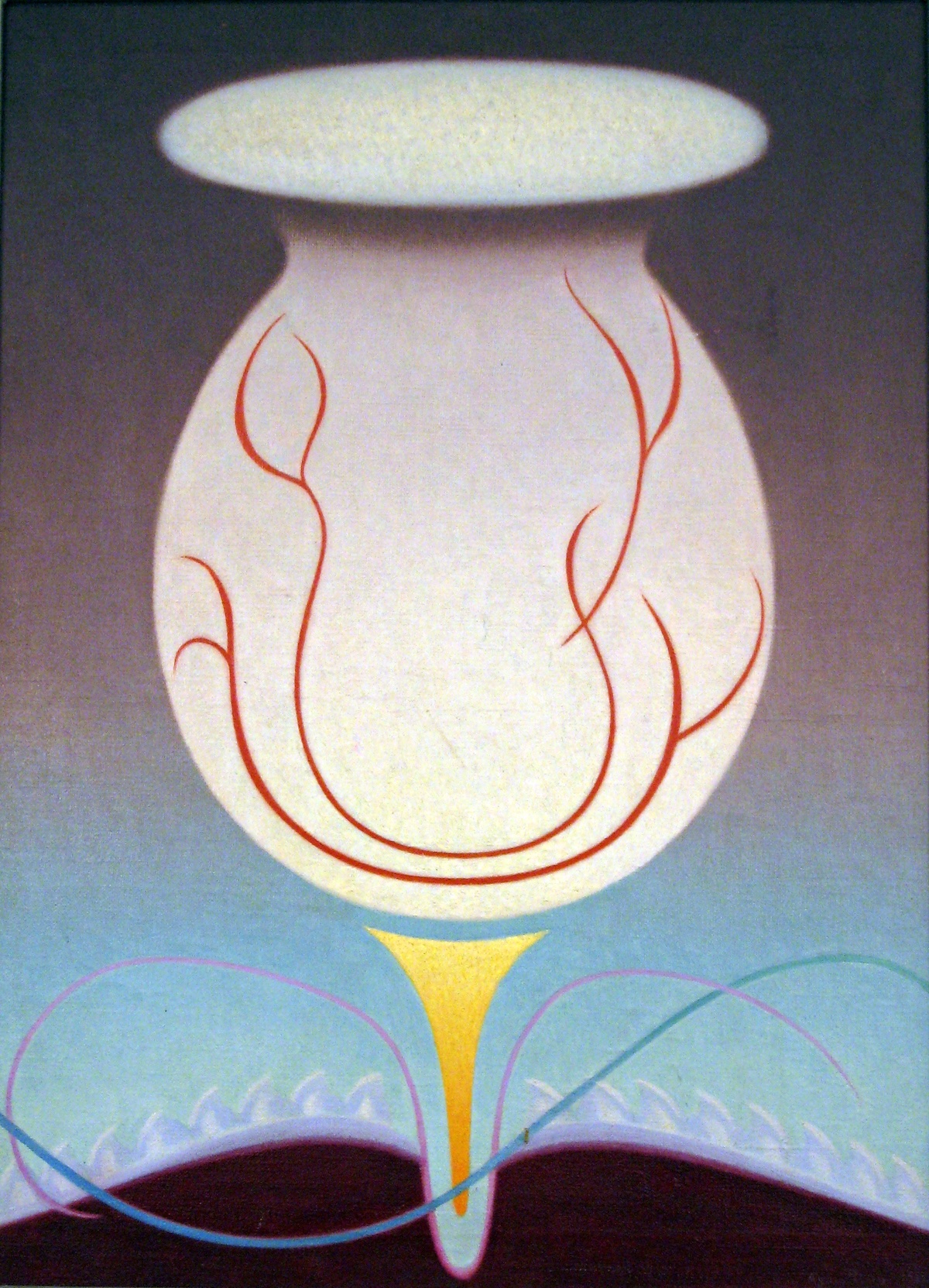
The Chalice, 1932
The article below was submitted by Jan Rindfleisch, who was Euphrat executive director from 1979-2011. She tells more about the "Staying Visible" project and the Sussmans' gift.
The unique and important story of the Sussman Staying Visible Collection serves as a groundbreaking example of how art history can be made. It highlights the impact of grassroots research and preservation of archives.
The Sussman Staying Visible Collection of Agnes Pelton paintings and archival material was started by donations from Cornelia and Irving Sussman to the Foothill–De Anza Community College District through the work and advocacy of the Staying Visible Group. The group’s original research unearthed and highlighted the contributions of important but underrecognized artists including Pelton.
Their project began with the 1981 book and exhibition "Staying Visible: The Importance of Archives" at the fledgling Euphrat Gallery (later Museum of Art), which at the time had no budget or salaried staff. The project encompassed an extraordinary collaboration – graduate students from San José State University, De Anza participants, students, scholars, artists, community members and major cultural institutions.
The Staying Visible Project called attention to the need to preserve the true art history, especially the contributions of women and others marginalized or ignored by the mainstream art world. It led to the diversified donation by the Sussmans in the mid-1980s. The archival materials, which longtime Euphrat executive director Jan Rindfleisch then donated to the Smithsonian Institution, have provided the basis for major research on Pelton.
When Agnes Pelton was active, women and people with different ideas and backgrounds were mostly hidden in the art world, with token representation in exhibitions and publications. "Staying Visible" was part of a multipronged action to raise many voices and prepare a more hospitable environment for women and diversity in the arts, whether that involved making art, writing, documenting, curating exhibitions, or taking leadership roles in the arts community in order to truly keep visible.
Original research and archives have revealed major parts of the Pelton and Sussman close friendship and legacy, notably the impact of their art and writing upon their extended circle of fellow activist artists and authors that helped influence social change in matters of race, class, religion, education and gender. The author-and-educator couple tackled thorny subjects relating to cultural change, social justice and civil rights movements. The trio’s value today is interdisciplinary. Through innovative painting, social commentary fiction and nonfiction, teaching, directing drama, and more, they built community and challenged art-world, academic, cultural, political and economic norms.
The Sussmans corresponded with Rindfleisch after the Staying Visible exhibition. They were drawn to the budding organization’s interdisciplinary reach, its forum approach, the college/community partnership, and the collaborations with programs for the physically limited, women’s studies, social and physical sciences, and religious studies. These approaches were not commonplace in the art world or academia in the early 1980s. In their own work, the couple also emphasized dialogue and collaboration between disciplines and communities. The shared intellectual expansiveness drove their bold decision to donate their Pelton collection to the virtually penniless Euphrat and to encourage others to do likewise.
In 1981, Margaret Stainer, then an SJSU graduate student, wrote the essay about Agnes Pelton in "Staying Visible." Eight years later, as a respected art historian, Stainer catalogued most of Pelton’s works in a publication for an exhibition she curated at Ohlone College. It was Pelton’s first solo exhibition since 1955.
The Sussman Staying Visible Collection’s importance extends beyond the paintings to put them in the context of the conventional art world and contemporary culture, and demonstrate the cooperation, audacity and innovations of those who championed Pelton’s work until the changing times finally caught up with her singular vision.

